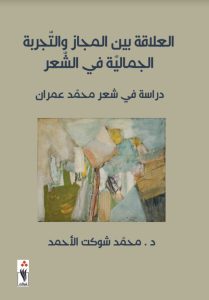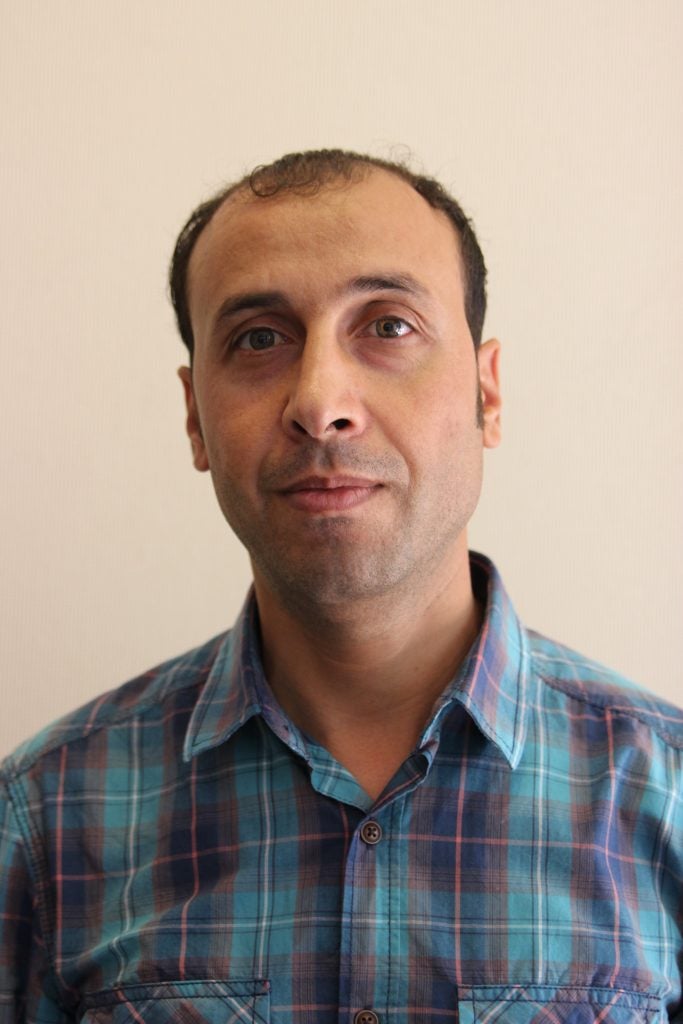 Assistant Teaching Professor Mohammad Al Ahmad recently published his book The Relationship Between Metaphor And Aesthetic Experience in Poetry in Arabic with the Syrian publishing house Shurufat. His book takes as a starting point that works of art involve two experiences: that of the aesthetic reception of the subject matter and that of creativity. It attempts to expose the relationship between these two experiences and asks the central question of how the aesthetic experience manifests in the metaphor of the text. Dr. Mohammed shares more on his book below:
Assistant Teaching Professor Mohammad Al Ahmad recently published his book The Relationship Between Metaphor And Aesthetic Experience in Poetry in Arabic with the Syrian publishing house Shurufat. His book takes as a starting point that works of art involve two experiences: that of the aesthetic reception of the subject matter and that of creativity. It attempts to expose the relationship between these two experiences and asks the central question of how the aesthetic experience manifests in the metaphor of the text. Dr. Mohammed shares more on his book below:
 “It is common knowledge in poetics that there are aesthetic values that poets express or represent in their poetry. These values are various and limitless, but among them are: the beautiful, the ugly, the sublime, the tragedy, the comedic, and the heroic. These are fundamental in art, just as they are in nature and in our lives. A poetic text may express any of these values without limiting itself to a single one. Poetic studies reveal a dominant value that becomes the prevalent experience of a text—claiming that one text interprets the experience of beauty, another the experience of loftiness, another the experience of tragedy, and so on. Since the poet renders his aesthetic experience indirectly, it manifests—if the poet is creative and faithful to a coherent aesthetic experience—on all levels of the work: phonetic, morphological, syntactical, and semantic (lexical and figurative), so that it is possible to study the manifestations of this expression on all these levels. However, in my extensive readings in poetry, I have noticed that poetic imagination is especially influenced by the type of experience, sometimes in obvious ways, and others in profound ways that require special analytical mechanisms in order to reveal them. Despite the large number and popularity of studies of the so-called “artistic imagery” or “poetic imagery” in Arabic poetry, I did not find a study that tests the nature of the relationship between the artistic imagery on the one hand, and the prevailing aesthetic experience in the text or in the poet’s poetry on the other. My study attempts to address this gap, using Mohammad Umran’s poetry as a testing site to explore this relationship.”
“It is common knowledge in poetics that there are aesthetic values that poets express or represent in their poetry. These values are various and limitless, but among them are: the beautiful, the ugly, the sublime, the tragedy, the comedic, and the heroic. These are fundamental in art, just as they are in nature and in our lives. A poetic text may express any of these values without limiting itself to a single one. Poetic studies reveal a dominant value that becomes the prevalent experience of a text—claiming that one text interprets the experience of beauty, another the experience of loftiness, another the experience of tragedy, and so on. Since the poet renders his aesthetic experience indirectly, it manifests—if the poet is creative and faithful to a coherent aesthetic experience—on all levels of the work: phonetic, morphological, syntactical, and semantic (lexical and figurative), so that it is possible to study the manifestations of this expression on all these levels. However, in my extensive readings in poetry, I have noticed that poetic imagination is especially influenced by the type of experience, sometimes in obvious ways, and others in profound ways that require special analytical mechanisms in order to reveal them. Despite the large number and popularity of studies of the so-called “artistic imagery” or “poetic imagery” in Arabic poetry, I did not find a study that tests the nature of the relationship between the artistic imagery on the one hand, and the prevailing aesthetic experience in the text or in the poet’s poetry on the other. My study attempts to address this gap, using Mohammad Umran’s poetry as a testing site to explore this relationship.”
Dr. Al Ahmad is a former faculty member and Vice Dean of Academic Affairs at Al-Furat University’s campuses in Deir ez-Zor and Raqqa in Syria, which were shut down by ISIS in 2014. Through the work of the Institute for International Education’s Scholar Rescue Fund and faculty at Georgetown, Dr. Al Ahamad had the opportunity the following year to come to CCAS, where has since taught a wide range of Arabic content courses for advanced language learners, such as prison literature, Arabic poetry, and Arab feminism through literature. Dr. Al Ahmad writes in the acknowledgements of his book that IIE and CCAS “not only saved my academic career but also saved my children’s life and shaped their future. The safe, academic and welcoming environment at Georgetown University has given me the opportunity to maintain and develop my academic career and resume research projects, of which this book is one.”
This article first appeared in the Winter/Spring 2022 CCAS Newsmagazine.